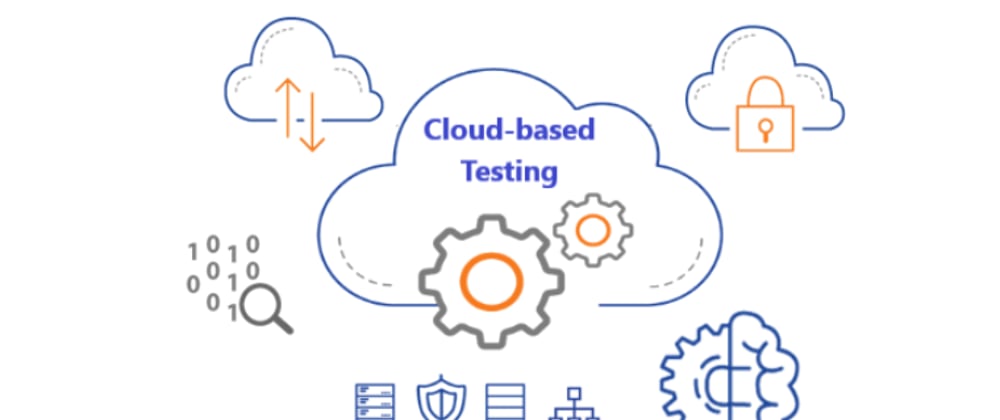The demand for consistent and high-quality software has never been more significant in today’s rapid-paced technological landscape. As our reliance on applications grows, so does the necessity for comprehensive and efficient testing solutions. This has made cloud-based testing a cornerstone of the modern software development process. In this article, we delve deep into the advantages of testing on a real device cloud and discuss how geolocation browser tests are pivotal in improving the user experience.
The Evolution and Dominance of Cloud-Based Testing
The software development landscape has radically transformed in recent years, with traditional testing methods giving way to more advanced and efficient approaches. Central to this transformation is the ascent of cloud-based testing. As applications grow more complex and user demands diversify, cloud-based testing has emerged as the global go-to solution for software development and QA teams.
So, what is driving this shift towards cloud-based testing?
- Scalability on Demand: Unlike traditional testing setups, which require significant upfront investment in hardware and resources, cloud-based environments allow teams to scale their testing infrastructure almost instantaneously. Whether you’re testing a small feature or a massive update, the cloud can accommodate it all without breaking a sweat.
- Ubiquitous Accessibility: With cloud-based testing, developers and testers can access their testing environments from anywhere, at any time. This means teams across various geographical locations can collaborate in real time, speeding up the testing process.
- Diverse Testing Environments: The cloud hosts a myriad of devices, operating systems, and browser configurations. This vast array ensures that applications are tested across all possible scenarios, ensuring broad compatibility and consistent user experiences.
- Resource and Cost Optimization: Maintaining an in-house device lab is both resource-intensive and costly. Cloud-based testing eradicates the need for such labs, translating to significant cost savings. Moreover, since resources in the cloud can be spun up or down based on demand, wastage is minimized.
- Seamless Integration with DevOps and Continuous Integration: The cloud facilitates a smoother integration with CI/CD pipelines, allowing for automated testing at every stage of the development process. This ensures the early detection of issues and accelerates the release cycle.
- Enhanced Security Measures: Contrary to misconceptions, cloud providers invest heavily in security. Advanced encryption, multi-factor authentication, and periodic security audits ensure that the testing data and environments are secure from potential threats.
Cloud-based testing isn’t just a trend; it’s the future. As software development processes evolve and the demand for faster, more efficient testing solutions grows, the cloud stands out as the most viable, flexible, and cost-effective solution. The dawn of this testing methodology signals a brighter, more efficient future for software development and quality assurance processes.
Tapping into the Revolutionary Potential of the Real Device Cloud
In an ever-evolving digital era, the ability to test applications and platforms on a diverse range of real devices is becoming more crucial. Enter the real device cloud – a transformative approach to application testing that offers access to genuine devices hosted in global data centers. This strategy transcends the limitations of traditional testing, offering a more genuine environment for assessing app performance and functionality.
Let’s delve deeper into the unmatched benefits of utilizing the real device cloud:
- True-to-Life User Experience: Testing on emulators can be valuable, but nothing beats the authenticity of real devices. They offer tactile feedback, actual screen resolutions, hardware interactions, and other nuances that emulators might miss. By harnessing the real device cloud, developers and testers can gain insights into the genuine user experience, ensuring the application responds well in real-world scenarios.
- Broad Device and OS Coverage: With technology advancing at lightning speed, many devices with varied specifications hit the market regularly. The real device cloud allows testers to ensure app compatibility across various device models, operating system versions, screen sizes, and configurations. This breadth of coverage ensures that most users have a seamless UX, regardless of their device.
- Accessibility and Flexibility: Gone are the days when testers had to wait their turn to access a specific device in an in-house lab. Testers can remotely access any device from anywhere with the real device cloud. This flexibility speeds up the testing process and facilitates parallel testing, further boosting efficiency.
- Accurate Performance Monitoring: The real device cloud provides real-time analytics and performance data, allowing testers to identify bottlenecks, glitches, or other issues promptly. This real-time feedback mechanism ensures faster resolution, ultimately leading to quicker product releases without compromising quality.
- Cost-Efficient: Maintaining an in-house device lab with the latest devices can be prohibitively expensive and logistically challenging. The real device cloud eliminates the need for such investments, offering a more economical and sustainable solution for businesses of all sizes.
- Global Testing Environment: Applications for a global audience must cater to users in various geographies. The real device cloud facilitates this by allowing tests to be run in different regions, ensuring the app performs optimally across diverse network conditions and user settings.
In sum, the real device cloud isn’t just a luxury; it’s quickly becoming necessary in today’s digitized world. Offering a more genuine, flexible, and comprehensive testing environment equips developers and testers with the tools they need to create superior digital experiences for users worldwide.
Geolocation Browser Tests: Enhancing User Experience Across Borders
Another crucial aspect of efficient testing is ensuring that your application or website provides an optimal UX, regardless of geographical location. Enter geolocation browser tests. This allows testers to simulate user interactions from various global locations, ensuring that content is rendered correctly and services are accessible and efficient, no matter where the end-user is situated.
Read: Mastering SaaS Testing Tools - A Comprehensive Guide for Enterprises
The benefits of geolocation browser tests are:
- Localization Verification: Ensure that region-specific content, like language or currency, is accurately displayed.
- Performance Assessment: Determine how quickly and smoothly your application or website loads in different locations.
- Regulatory Compliance: Validate that region-specific rules and policies, such as data protection, are adhered to.
- Network Condition Testing: Assesses application performance under various network conditions specific to regions.
In Conclusion
The message is clear for testers, product managers, SREs, DevOps, and QA engineers: to ensure robust, consistent, and globally efficient software, harnessing the power of cloud-based real device infrastructure is paramount. The confined, in-lab testing era is waning, making way for more versatile and representative cloud-based testing methods. With the tools provided by platforms like HeadSpin, testers can ensure that their applications function and thrive in the real world, delivering unmatched user experiences regardless of the device or location.
Article resource: This article was originally published here https://www.techbeezzly.com/elevating-testing-efficiency-with-cloud-based-real-device-infrastructure/







Top comments (0)